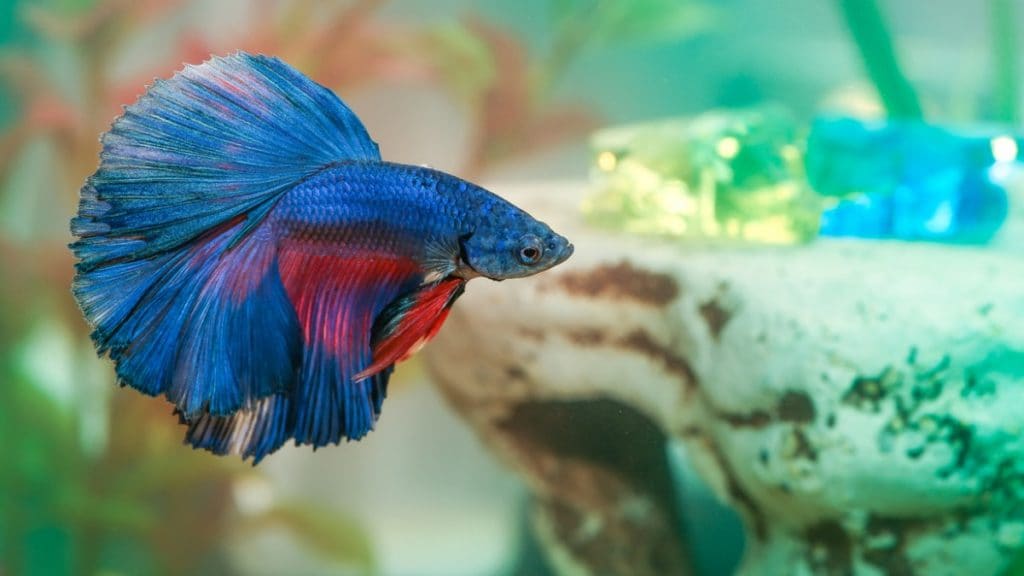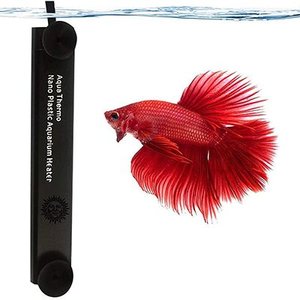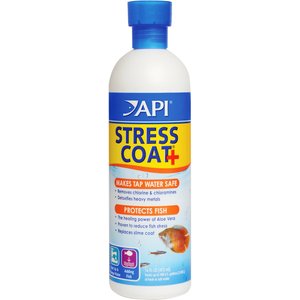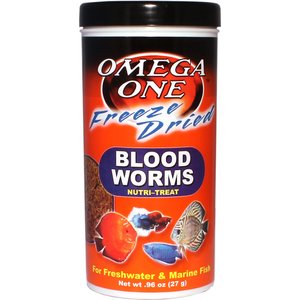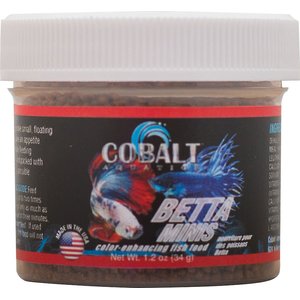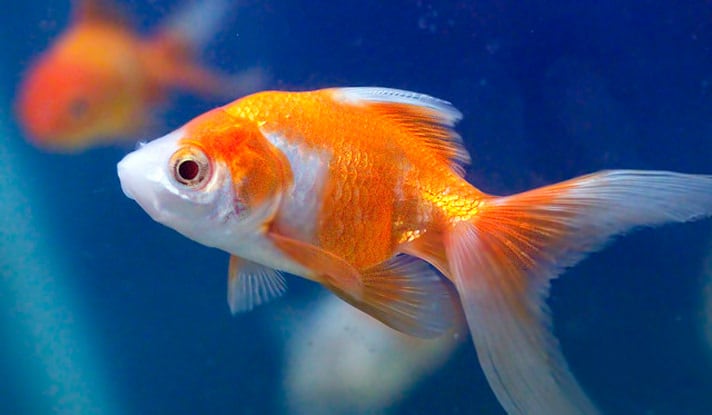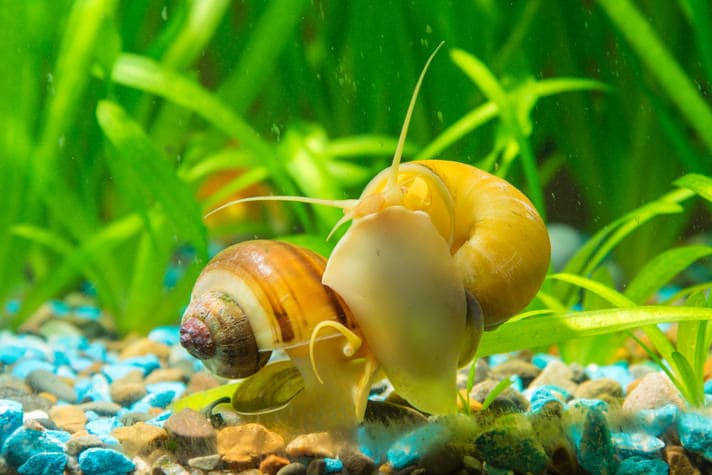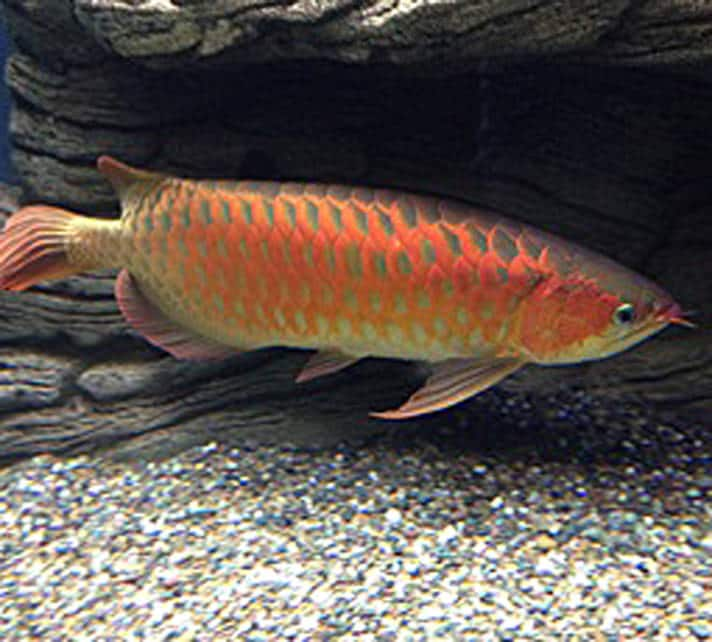In This Guide:
Betta Fish Supplies
Before you bring home your betta, you’ll want to make sure you have the essentials. Here’s a list of everything you will need to take care of your new fish:
- Aquarium (5 gallons or more)
- Filter
- Heater and thermometer
- Decorations
- Water (tap is fine)
- Water conditioner
- Water quality test strips
- Betta fish food
- LED light (optional but necessary to keep live plants in your aquarium)
- Aquarium plants (optional)
- Substrate like sand, gravel, rocks, etc.(optional)
- Bucket with lid (optional, to hold conditioned water for water changes)
To make sure your bettas come home to a healthy home, set up your tank and let it run for at least a week before adding a fish, a process called “cycling.” You can find out more about cycling in our Betta Fish Water Quality section below.
Betta Fish Aquarium Size and Setup
Size
Your betta’s aquarium should hold a minimum of 5 gallons of water. Bettas can survive in smaller tanks, but just because it’s possible doesn’t mean it’s pleasant. (Imagine spending your whole life in a space the size of your bathroom, for instance.) Bettas are not big fish, but they do enjoy space to roam, and living in too small a tank for an extended period of time will shorten their life span.
Décor
In the wild, bettas’ native habitats are rice paddies with plenty of places to hide and rest. You can replicate the characteristics of these environments by providing your betta with decorations like plants (real or fake), logs and caves. But you can’t put just anything in your betta’s tank. Here’s what to avoid:
- sharp decorations that can snag or tear your fish’s fins
- metal items that will rust
- painted ornaments (the coating will degrade and flake off in the water)
- sea shells, dried coral or beach sand, which can alter the pH of your tank water
The 5-gallon Marineland Portrait Blade Light Aquarium Kit is a great option for betta fish parents because it comes complete with filtration and lighting right out of the box. If you live in a place with nice natural light, your betta may not require an artificial light source, but if the room your fish lives in is on the darker side, you’ll definitely want to give your betta an aquarium light, too.
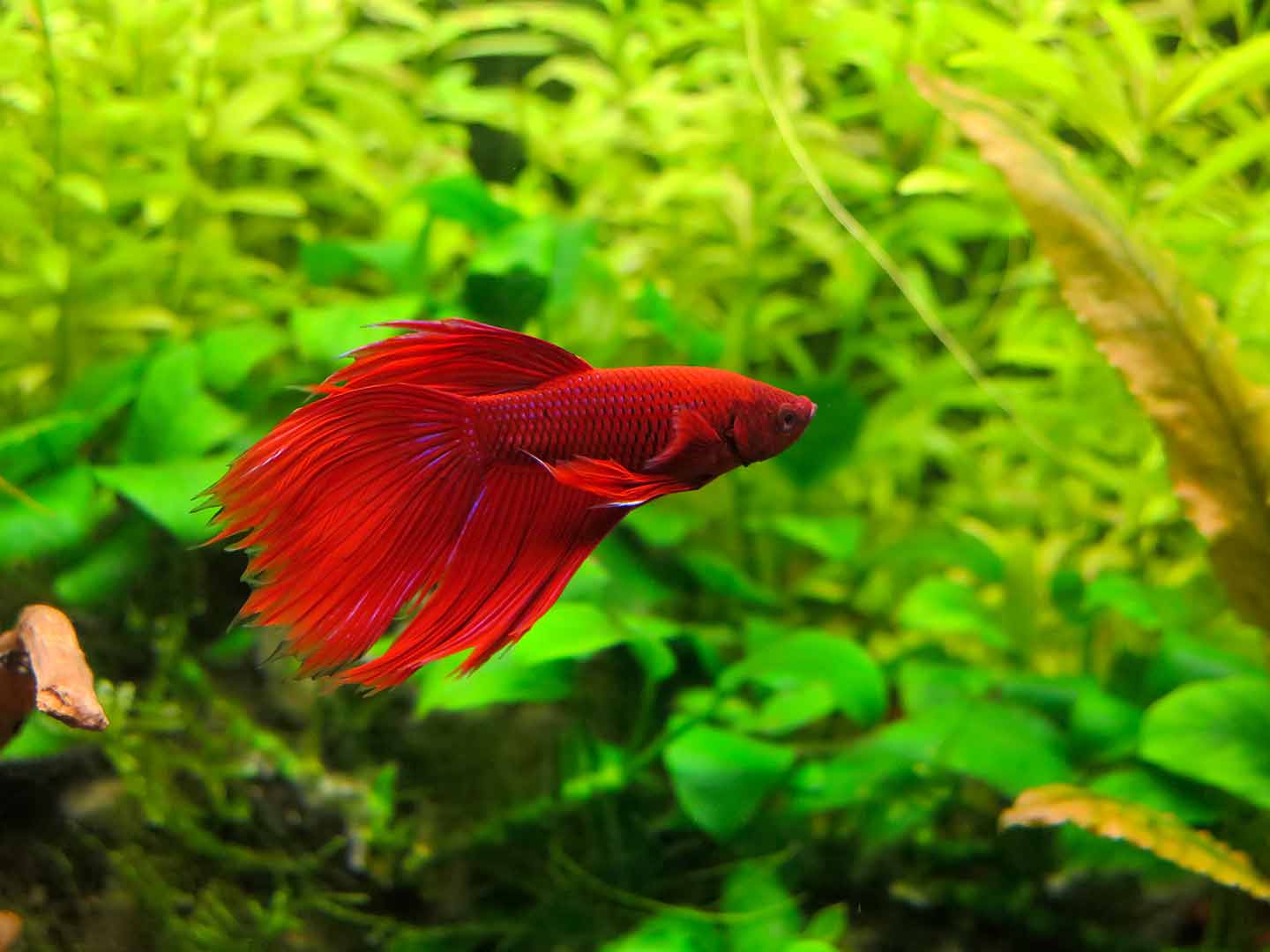
iStock.com/Laraish
Betta Fish Water Quality
Bettas have specific water needs, from temperature to pH levels and other measures of quality. Here’s how to ensure you’re keeping them in the perfect type of water.
Water Temperature
Bettas need warm water between 75-80 degrees Fahrenheit, ideally at the upper range of those temperatures, to be comfortable. You will need a heater to keep the temperature in range, and you should choose one with enough power to heat your whole tank. The general rule is 1 watt of power per 1 liter (3.8L per gallon) of water; for a 5-gallon tank, for instance, you’ll need at least a 20-watt heater. The 50-watt Tetra HT10 Submersible Aquarium Heater & Electronic Thermostat is a good option because it automatically maintains water at 78 degrees Fahrenheit and can be used in aquariums up to 10 gallons.
Water Quality
To make sure the water in your betta’s tank has healthy levels of compounds, ions and pH, you’ll want to test it weekly. You can check pH quickly and easily by using test strips like API’s 5-in-1 Test Strips. These will measure five parameters for you:
- pH, a measurement of hydrogen ions
- Nitrite and nitrate, both nitrogenous compounds that come from the breakdown of ammonia, the main waste product that fish excrete through their gills
- Carbonate (KH), a measure of dissolved bicarbonate and carbonate ions, which indicates the buffering capacity, or pH stability, of your water
- Hardness (GH), a measure of calcium and magnesium ions, which are important for breeding certain species of fishes.
Getting familiar with these water quality measurements is useful for understanding fish and aquarium health. Betta fish parents should pay special attention to pH levels, nitrite and nitrate.
pH Levels
Bettas do best when kept in water with a neutral pH of around 7, though they can tolerate a range of 6.5 to 7.5. Tap water in most places falls somewhere between 6.5 and 8.5, so it’s a good idea to check the pH of your tap water before putting your fish in it, as too high or low a pH level will seriously stress out your betta.
So your water’s pH level is off—now what? If your tap water is out of range for betta health, use a product like API Proper pH 7.0 Aquarium Water Treatment that is specifically designed to modify and maintain pH levels in freshwater aquariums.
Nitrite and Nitrate Levels
Nitrite and nitrate measurements are also important to watch, especially when you first set up your tank. They are both measured in parts per million (ppm). Nitrite and nitrate compounds come from the degradation of ammonia, which comes from fish and food waste, so once your aquarium is up and running, these will start to accumulate.
- Nitrate is the less dangerous of the two, but still should be kept within a safe range, which is between 0 and 40 ppm. A reading above 80ppm can be quite hazardous. If you get a high nitrate reading, change at least 50 percent of the water.
- Nitrite, while less toxic than ammonia, is still quite harmful to your fish. If you get a reading of any nitrite at all, you’ll want to do a large water change (80 percent or greater) immediately. This is the fastest and most reliable way to eliminate nitrite.
Other Water Quality Concerns
Tap water usually contains several elements that can be detrimental to the health of your betta:
- chlorine
- heavy metals like copper, lead and zinc
A water conditioner like API Tap Water Conditioner will remove chlorine and detoxify these heavy metals, making the water safe and healthy for your betta. It’s a great idea to have a bucket filled with conditioned tap water ready for when you need to do water changes.
Cycling Your Water
You’ve chosen a tank, added the conditioned tap water, installed the filter, placed the heater and arranged your décor. But wait—don’t put your betta in that water just yet! First, it’s important to turn everything on and let your aquarium system run for one week without a fish in it. This waiting period is called cycling, and it’s one of the toughest parts of the process—you’ll be anxious to put your betta into this great new tank! But it’s well worth the wait to ensure the health of your fish.
Cycling allows time for crucial bacteria to start inhabiting all the surfaces of your aquarium. This is important because these bacteria are required to break down ammonia, the primary waste product of fish excreted through their gills, into nitrite and nitrate. If ammonia and nitrite build up in your tank and are not removed through breakdown by bacteria and/or water changes, they will kill your fish. The best way to avoid this unfortunate outcome is to let your tank cycle before adding a fish.
If you can’t wait a whole week to put your betta in the tank, or you just want to jumpstart the cycling process, add API Quick Start to your aquarium. This is a liquid filled with bacteria that will immediately begin to establish the biological filtration your aquarium needs.
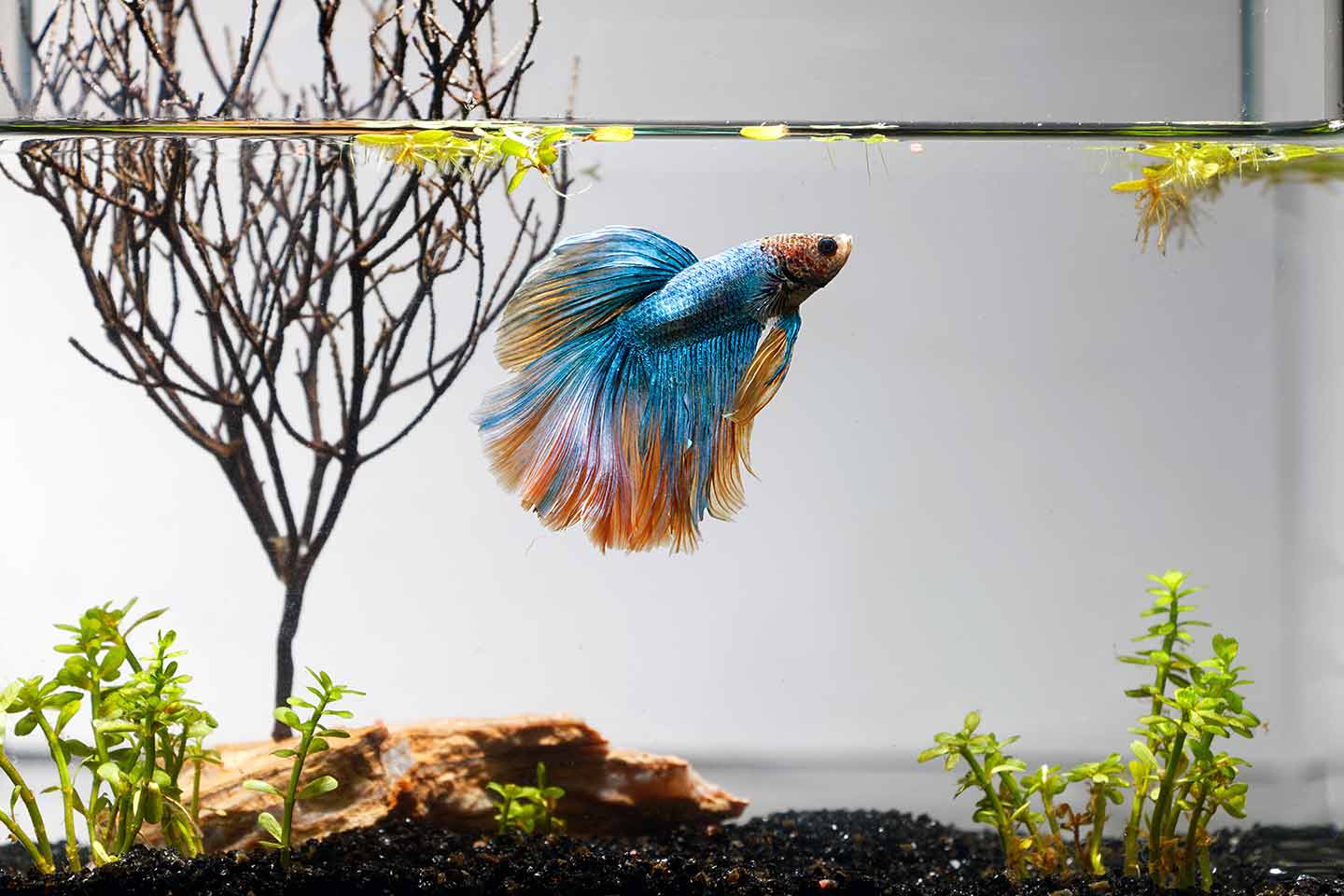
iStock.com/CmErsoy
Betta Fish Filters
When choosing a filter for your betta fish tank, consider these factors:
- Aquarium size: Check the packaging of your filter to ensure it’s designed to work with your aquarium’s size. For example, if you have a 5-gallon tank, choose one like the Tetra Whisper Aquarium Power Filter that’s designed for tanks between 5-10 gallons.
- Output rate: Bettas do not like lots of movement in the water, so a high output rate, creating heavy currents in the water, will stress them out. Choose a filter with an adjustable output, like the Aqueon QuietFlow Internal Aquarium Filter, so you can modify the flow to best suit your fish.
- Your betta’s tank mates and plants: The filter you choose should also work for other living things in your tank. Live plants, for example, use CO2 in the water to grow, so having a filter with activated carbon that will remove that carbon dioxide and any plant supplements you might add would be harmful to your plants. Tank mates play a role too, as shrimp and some fish can be pushed around or injured by the intake tube from a filter with too much power. Talk to the experts at your fish store about any concerns you may have about your betta’s tank mates.
Cleaning Your Aquarium Filter
The majority of filtration systems will come with three types of filter media designed to be used simultaneously in one filter cartridge. These three types are all used at once, and each type needs a different level of care:
- Mechanical filter media is usually a sponge or pad that physically strains waste particles from the water. It should be rinsed monthly.
- Chemical filter media is typically activated carbon that works by adsorption, a chemical reaction that traps pollutants inside the carbon. It should be replaced monthly.
- Biological filter media is generally a substrate, such as ceramic, with a large surface area to house and grow beneficial bacteria. This can be left alone almost indefinitely, or at least for a couple years.
You also have the option of buying a sponge filter like the SunGrow Betta Fish & Turtle Sponge Small Aquarium Tank Water System Filter. A sponge filter is quite simple—it’s basically just a high-quality foam sponge that fits onto a central strainer. This is a nice option for bettas because there is just one part to it, the sponge provides lots of space for beneficial bacteria to grow, and they offer lots of control over the flow rate. However, because they don’t contain activated carbon, your tank will not get chemical filtration. The sponge will need to be cleaned out at least once a month, and this can be done by turning off the pump, scooping some aquarium water into a bucket, removing the sponge, and squeezing it out in the bucket of water until is it rinsed. The sponge can then be reinstalled and the dirty water can be discarded and replaced with fresh, conditioned tap water.
Betta Fish Nutrition

iStock.com/HuyThoai
When it comes to feeding your betta, you have lots of options to consider. We’re breaking down the pros and cons of each:
Pellets: Pellets have a round or cylindrical shape that could be mistaken for insects, making them palatable to bettas. Because bettas are carnivorous, look for pellets that contain dried meaty foods like shrimp or salmon, such as Cobalt Aquatics Betta Minis Fish Food.
Frozen whole foods: If you have a local fish shop that sells frozen bloodworms or brine shrimp, you can feed them to your betta—they’re high in nutrients and bettas seem to love them! To serve, defrost a small amount of food about 20 minutes ahead of feeding time and give the thawed food to your betta.
Freeze-dried foods: Bloodworms and brine shrimp are also available in freeze-dried form. You'll need to soak freeze-dried foods in water for about 15 minutes prior to serving, because if a betta eats freeze-dried formulas, the food will absorb moisture in their gut causing constipation and other digestive issues. Adding an aquatics multivitamin is a good idea, too, to supplement any vitamins and nutrients lost during the freeze-drying process.
Live food: If you want to really spoil your betta, you can offer them live food. Bloodworms, brine shrimp and daphnia can all be pretty cultured at home; you may also be able to purchase them from a local aquarium store. This is the healthiest, most natural option for your betta, but be aware of the risks, too: live foods could carry diseases or parasites.
Pro tip: While bettas can eat fish flakes, aka the papery dried food often fed to other types of fish, they may avoid the food at first, perhaps because it can look like debris in the water when it floats on the surface. For this reason, our experts suggest feeding one of the above types of food instead.
No matter what, you don’t want to overfeed your betta. This can be harder than it sounds, because bettas can be beggars, and they’ll keep eating as long as you keep feeding. But the risks of overfeeding are real: bloating, swim bladder disorder, difficulty swimming and potentially even a shortened lifespan.
When wondering how much to feed your fish, remember that a betta’s stomach is about the same size as their eyeball, so you shouldn’t feed them more than that amount at a time—no matter how cute they look when they beg for more snacks.
You can tell when your betta is overfed because their bellies will look bloated and distended. This can generally be remedied by letting them fast for a couple days.
Betta Fish Care Schedule
Feed your fish (once or twice per day)
Test your water quality with test strips or a test kit
Clean the filter
Check the filter to make sure it’s running normally
Change 25%-30% of the water
Clean algae from tank décor
Check the water temperature to ensure it’s in range (TK degrees)
Tips for Cleaning Your Filter
- Filters will vary based on type and manufacturer. Always follow the cleaning instructions included with your filter.
- Never use any soaps or household cleaning products when cleaning the filter. These can be toxic to fish.
How to Clean Your Aquarium Décor
If algae is growing on your aquarium décor or the glass walls of your tank, follow these steps:
- Carefully remove your decor from the tank, making sure not to create too much current.
- Scrub the décor with an old toothbrush to remove the algae.
- Rinse your décor in clean, fresh water before returning it to the tank.
- Use an old toothbrush to scrub algae from the glass walls of the tank, too. You can try to scoop the algae out of the tank, or just allow it to float in the water – it will eventually get caught in your filter and will be removed the next time you clean it.
Betta Fish Health Warning Signs
You can’t ask your betta how they’re feeling, so you need to know the visual differences between a healthy and a stressed or sick fish. Here’s what to look for:
Bright, vibrant colors
Dull or muted colors
Full, flowing fins
Fins that are tattered or clamped (held close to the body)
A good appetite
Poor appetite
Active and energetic
Lethargy, lying at the bottom of the tank, or hiding
The importance of good water quality for the health of your fish cannot be overstated. Water parameters such as temperature, pH, and nitrate that are out of range can cause many issues. If your betta is showing signs of illness, check all your parameters, trouble shoot, do a 50% water change, and check all your parameters again. Water changes can fix a surprising number of problems.
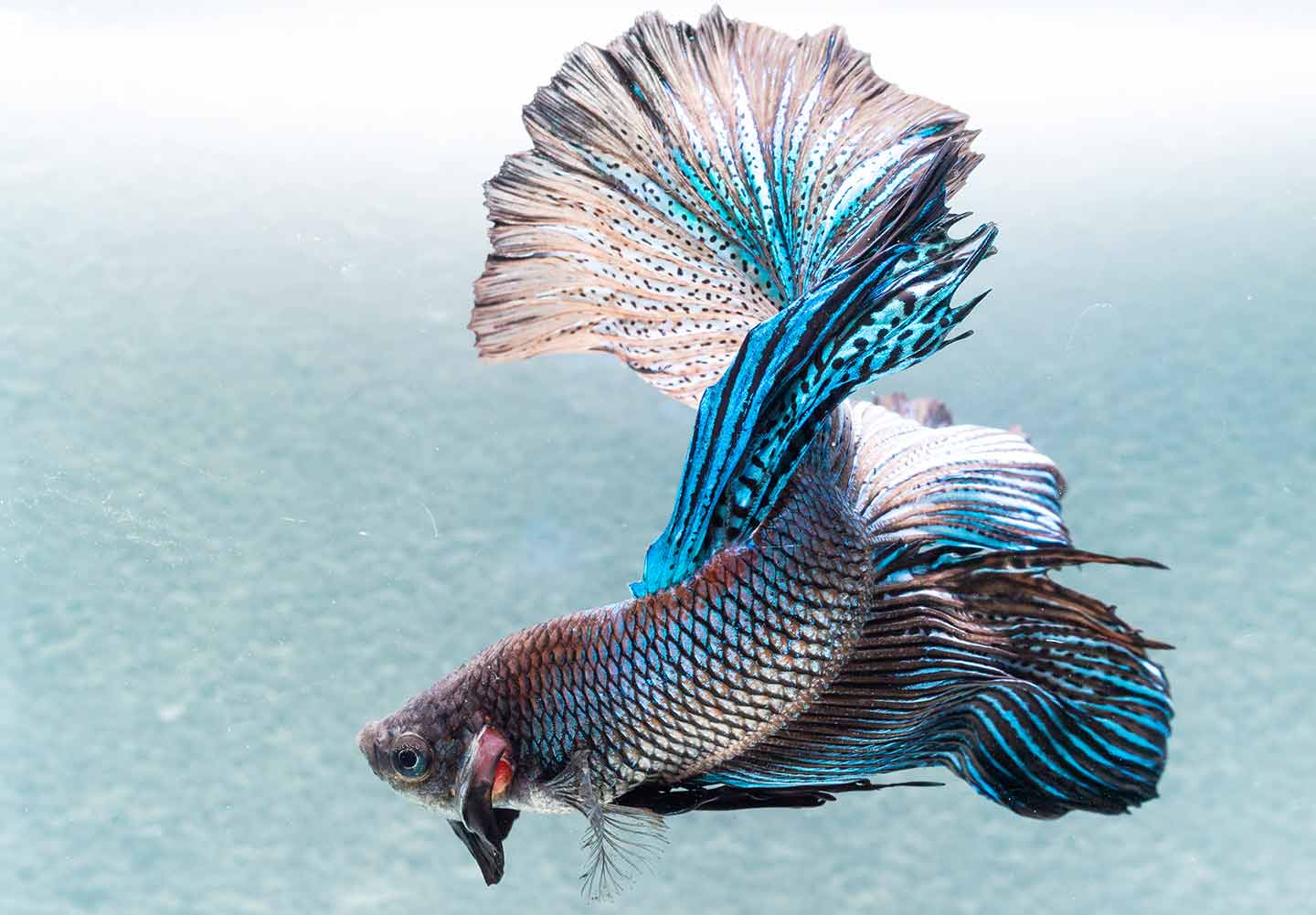
iStock.com/primeimages
Common Diseases in Betta Fish
Fin Rot
Fin rot is caused by bacteria eating away at your betta’s fins or scales, typically the result of dirty water with too much ammonia.
Fins with: frayed or ragged edges; small holes; a thin or transparent appearance; red, black or white edges; inflammation or slimy texture at the base.
Start by changing 75% of the water once per day for 2-3 days. If the rot doesn’t begin to improve after that, add 1 teaspoon per gallon of freshwater aquarium salt to the water. Continue with the daily 75% water changes, adding the required amount of salt each time it is changed. If the rot still persists, try a mild medication like Maracyn by Fritz Aquatics.
Velvet
Velvet is caused by parasites and is very contagious.
The appearance of yellow-ish dust covering the betta; lethargy; loss of color; loss of appetite; clamped fins (held close to the body).
Treat with Malachite Green or Coppersafe. Both are very strong medications; follow the directions on the packaging exactly to avoid overdosing your fish.
Ich
Also known as “Ick” or “White Spot,” this is an infection caused by parasites.
A white, dusty appearance on your fish, resembling salt; loss of appetite, flashing (a betta behavior that involves quickly rubbing against objects), lethargy.
For early cases, treat with aquarium salt. For more advanced infections, treat with Coppersafe. Follow the dosing instructions in the packaging to avoid overdosing your fish.
Fungus
Fungal infections usually occur as the result of a pre-existing infection or injury, but can also come from other infected fish or dirty water.
A blotchy, white, cotton-like slime on the fish.
Add 1 teaspoon per gallon of freshwater aquarium salt to the water. Change 80% of the water daily, adding the required amount of salt each time it is changed. Continue this for one week. If symptoms persist, try an anti-fungal medication such as Erythromycin by API, Maracyn Two by Fritz Aquatics, or Fungus Cure by API.
Swim Bladder Disorder (SBD)
SBD is a common term for a variety of betta illnesses, so its causes can vary from overfeeding to bacterial infection to, in rare cases, tuberculosis. There is no clear way to determine the cause.
Difficulty swimming; lethargy.
Treatment is tricky because SBD can have many different causes. Try these steps: Avoid feeding your fish for 1-2 days and change at least 30% of the water. In most cases, SBD will resolve with time if the above steps are taken.
An important note about aquarium salt: Aquarium salt is specifically and carefully formulated for use in freshwater aquariums. Any other salts may have the potential to seriously harm your fish, and if implemented incorrectly, salt treatment can be more damaging than helpful.
Salt can kill many aquarium plants and can be harmful to some species of fish, so if your betta is living in a community tank, it's a good idea to remove your betta and treat them in a separate aquarium called a hospital tank. A hospital tank is a small, bare aquarium with nothing in it but conditioned water, a sponge filter, heater, and thermometer. This allows treatment of just the betta instead of the whole tank, which can be beneficial depending on the disease as well as the sensitivity of other tank mates.
Betta Fish Tank Mates
Yes, bettas can have tankmates—but not just any tankmates. Bettas, especially the males, tend to be territorial and aggressive, so you need to be careful about which fish you pair with them.
Here are 10 animals that can get along with bettas:
- panda corys
- mystery snails
- ghost shrimp
- neon tetras
- ember tetras
- African dwarf frogs
- harlequin rasboras
- feeder guppies
- clown plecos
- Kuhli loaches
Frequently Asked Questions
Q:Can betta fish see in the dark?
A:Bettas do not see particularly well in the dark. Even in the light, their ability to judge depth and distance isn’t that good, but they are great at perceiving color. They also have monocular vision, which means that each eye can see a different thing.
Q:Can betta fish eat tropical flakes?
A:Yes, bettas can eat tropical flakes, but they tend not to like them. It is thought that a flake on the surface just looks like a piece of debris to a betta, so they don’t go after them. Pellets are a much better dry food option.
Q:Can betta fish live in tap water?
A:Bettas certainly can live in tap water, but it must be treated first. Tap water usually contains chlorine and chloramines, as well as heavy metals such as copper, lead, and zinc, all of which can be detrimental to the health of tropical fish. You will need to use a water conditioner to remove chlorine and chloramine, and detoxify these heavy metals, making the water safe and healthy for your betta.
Q:Do betta fish need heaters?
A:Unless your room is 80 degrees Fahrenheit all year long, your betta will need a heater. These are tropical fish from Southeast Asia who are used to warm temperatures, and they thrive in water between 75 and 80 degrees Fahrenheit.
Now you know the basics of betta fish care—but as with every pet, there’s always more to learn. Always consult a fish veterinarian with any serious concerns about your betta. We’re wishing you the best on your fish parenting journey!
Expert input for this article provided by Dr. Julius M. Tepper, DVM, a certified aquatic veterinarian and fellow at the World Aquatic Veterinary Medical Association in Stafford, England.
Get more fish care advice:
Share:
